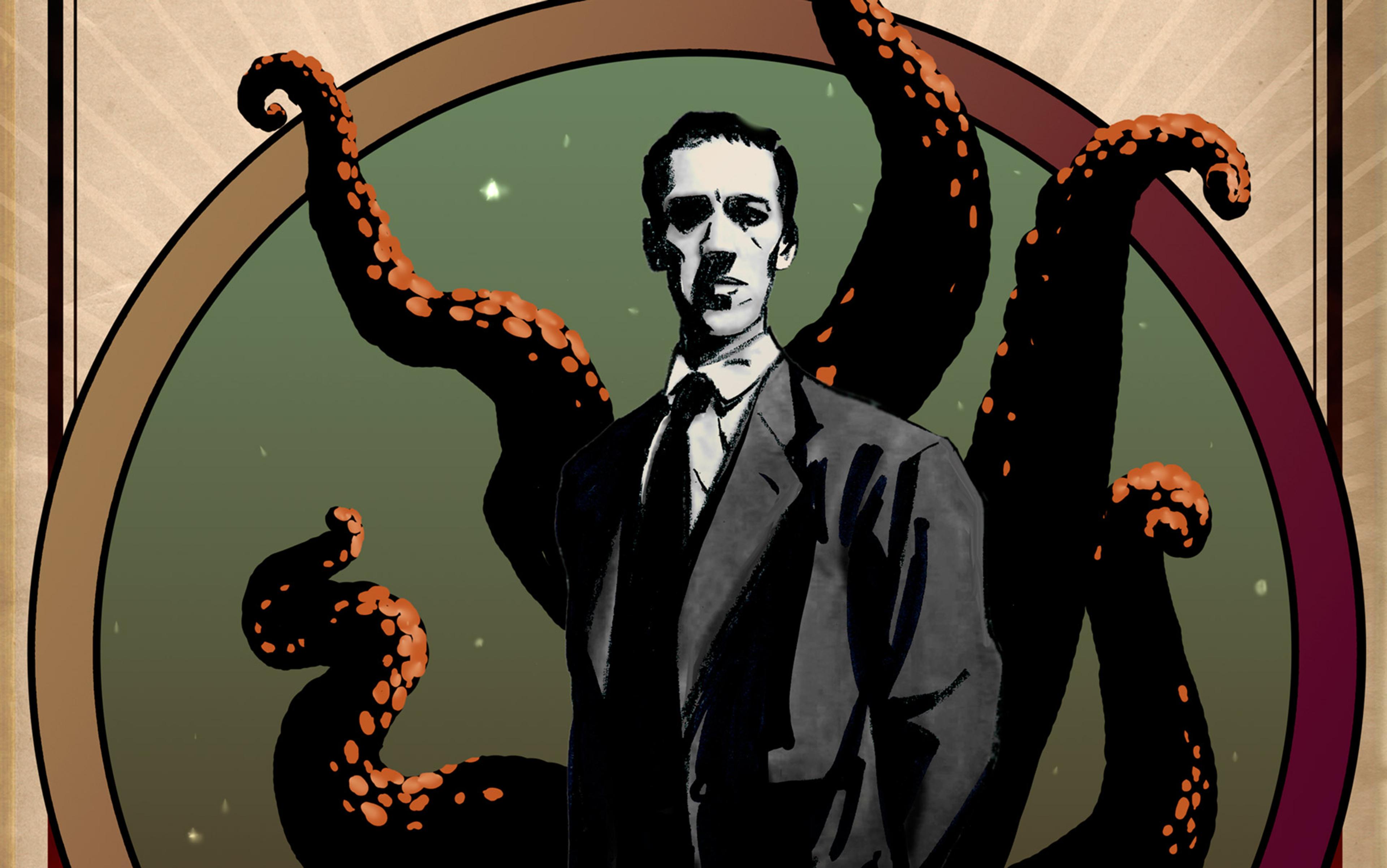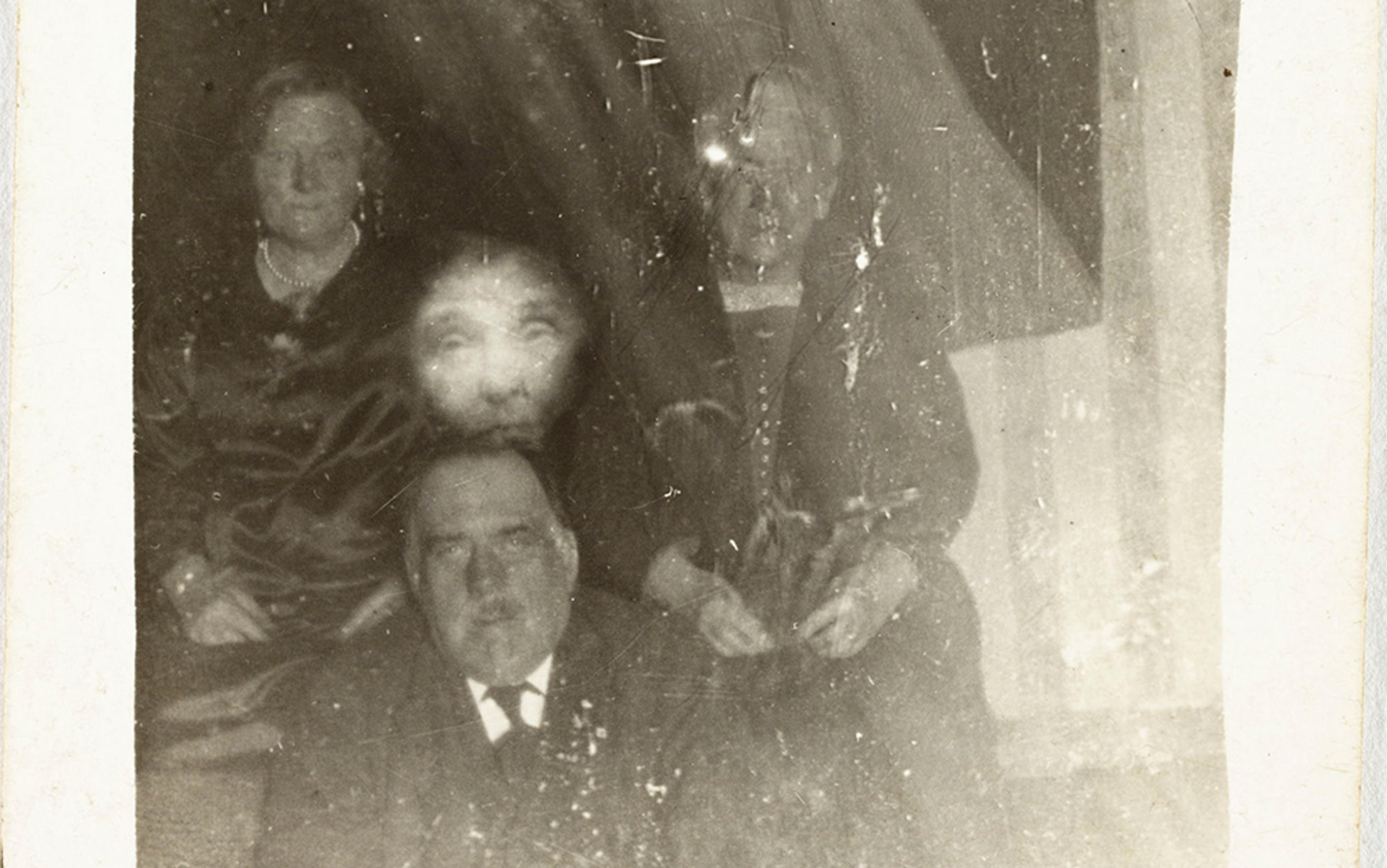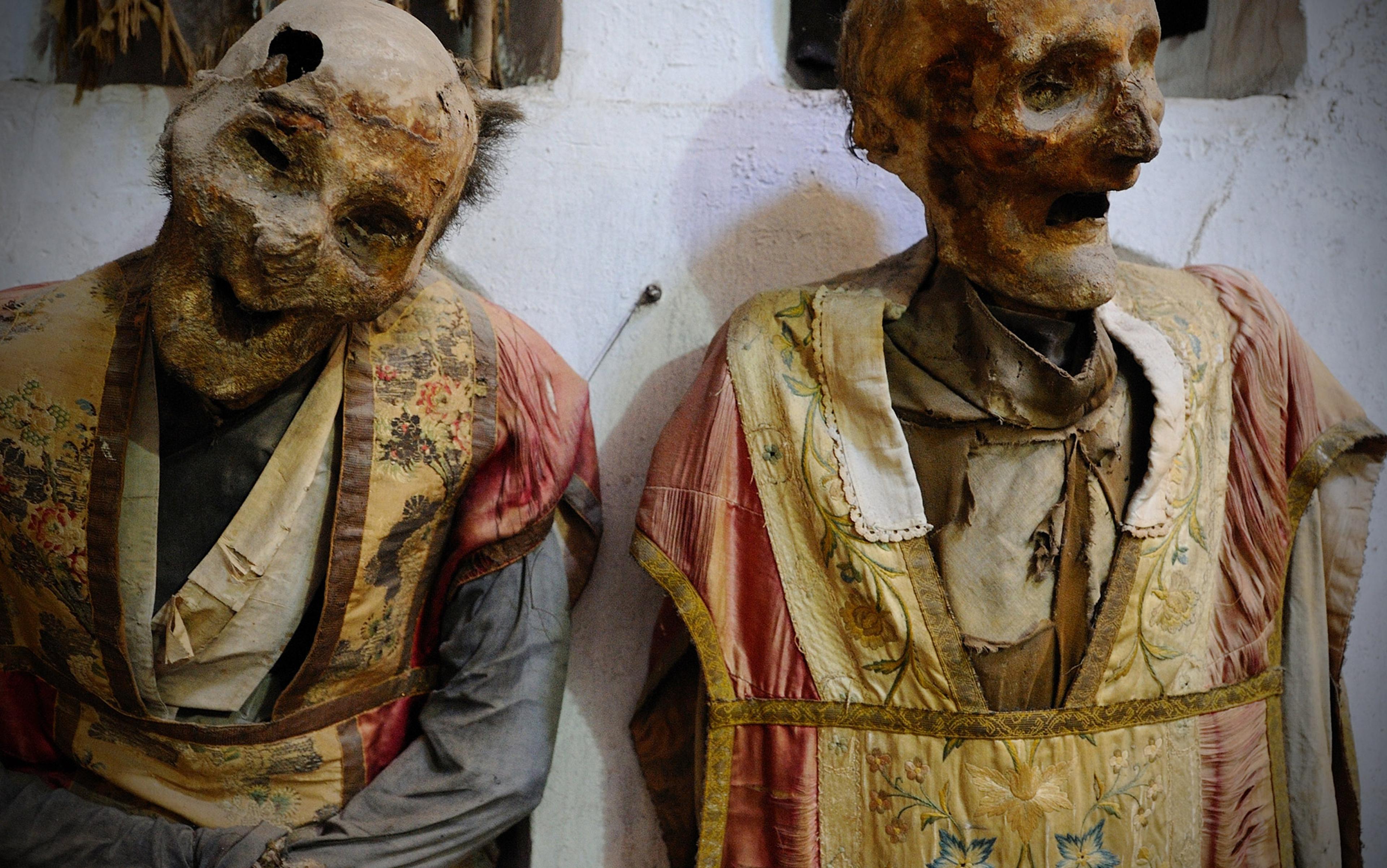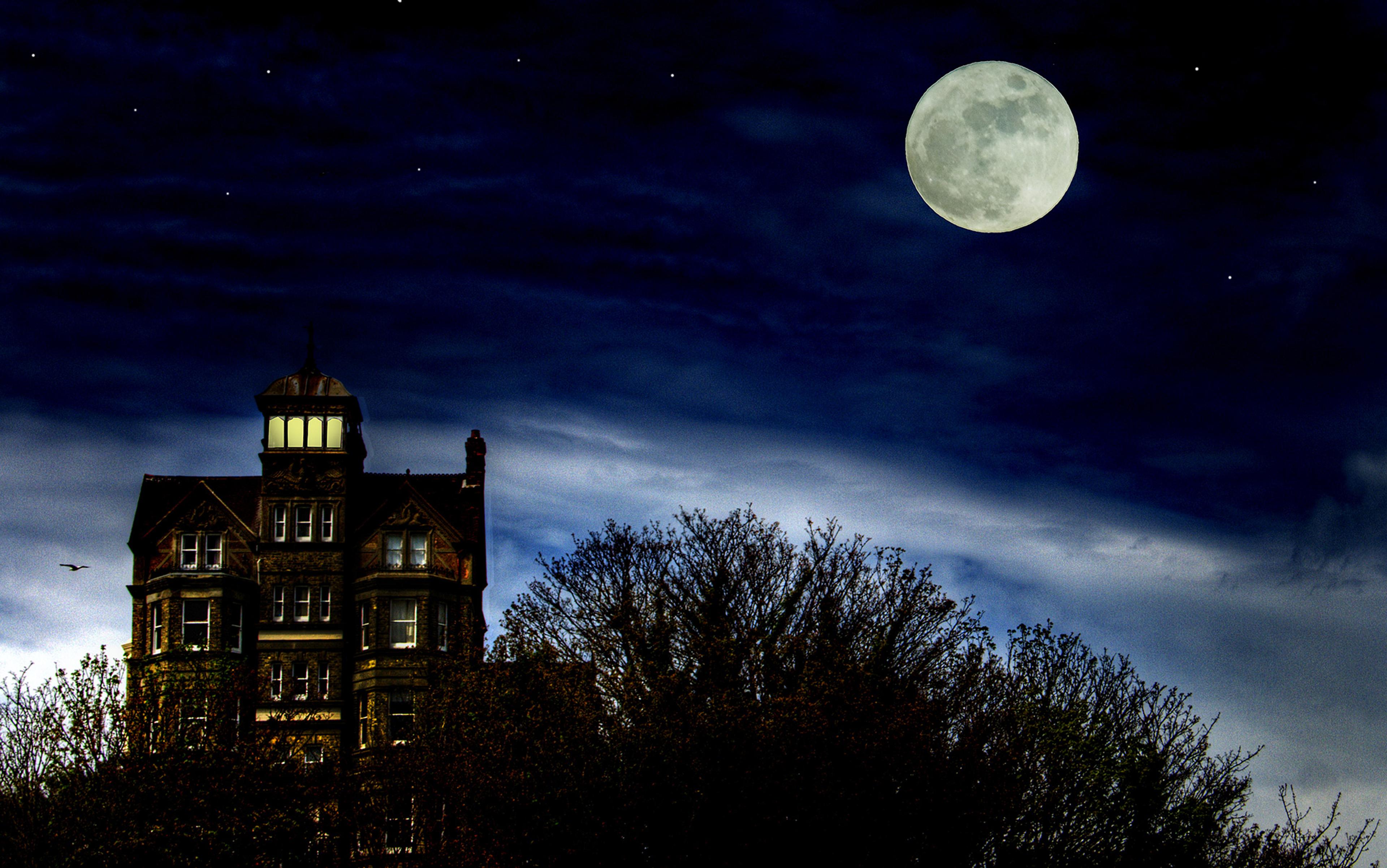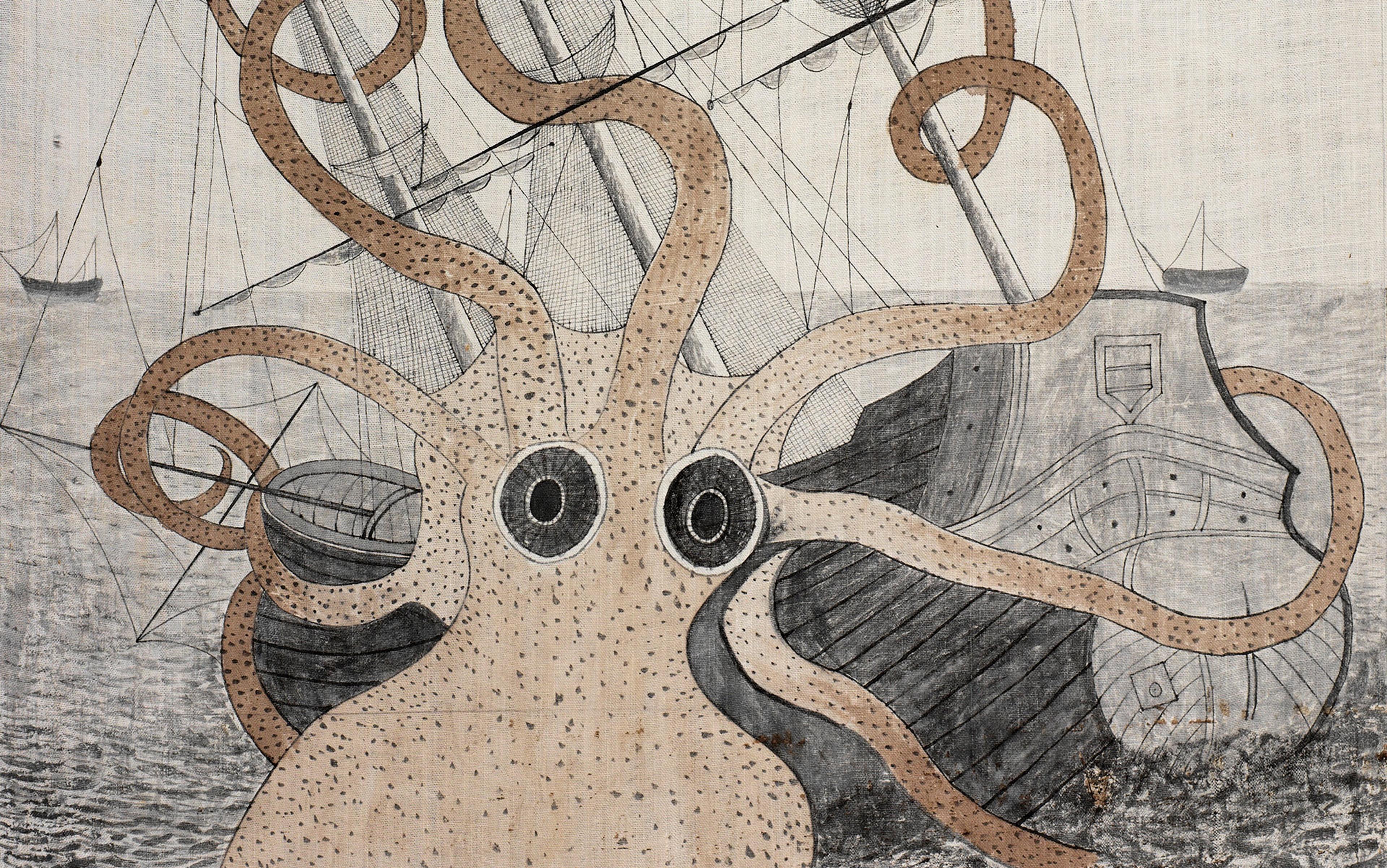Not long ago, in a room very like this one (the setting of most of these stories is both familiar and vague), I was looking for the origin of a video game. Polybius was a coin-operated arcade shoot-’em-up released in 1981 to a few suburban locations in Portland, Oregon. The player experience was abstract and psychedelic, involving geometric patterns, bright colours and arcane rules. It was also psychoactive, triggering insomnia, hallucinations and amnesia in its players. These side effects might not have been accidental. Hidden menu operations suggested they were designed in. At night, anonymous officials collected data from the machines.
Polybius the game never existed. Polybius the urban legend is, however, as real as these things get. It’s a persistent thread of internet lore, passed from message board to message board, elaborated over time. The myth of a sinister black-ops mind-control arcade game is so appealing that people have built and photographed ‘real’ Polybius units. Others have manufactured menu screenshots; on YouTube you can find ‘real’ Polybius gameplay footage. As a subcultural phenomenon, Polybius is significant enough to have produced at least one eddy in the mainstream: the game can be glimpsed in the background of a 2006 episode of The Simpsons.
As with most urban legends, the origins of the story are obscure and tediously contested. But hunting around for more information, I found that Polybius was simply the most prominent among scores of similar accounts of haunted or malign video games. Subliminal high-frequency sound in the LavenderTown level of Pokemon (1996) was linked to the suicides of more than 200 children. A ‘possessed’ version of Mario 64 (1996) has someone whispering in Japanese over the titles, and aberrant graphics and sound, which include disturbing images of a hanged Luigi and — somehow — the player’s own family. A bootleg copy of Spyro 2 (1999) turns out to be menacing and vengeful.
It isn’t just video games: there are similar stories about television shows. A so-called ‘lost’ Mickey Mouse clip by the name of ‘Suicide Mouse’ shows an unusually despondent rodent, and degenerates into white noise and screaming; the last 30 seconds were disturbing enough, apparently, to cause a Disney executive to shoot himself. There is a supposedly suppressed episode of The Simpsons called ‘Dead Bart’ in which the venerable yellow family loses its firstborn child and its distinctive ligne claire animation style. Initially, the episode is scratchy and glitchy, then it becomes photorealistic. Long unbroken scenes of mourning end in an apocalyptic prophecy.
Again, none of these games or shows is real, but stories about them exist in truly bewildering numbers. I had unwittingly stumbled into the world of ‘creepypasta’, a widely distributed and leaderless effort to make and share scary stories; in effect, a folk literature of the web. ‘[S]ometimes,’ wrote the American author H P Lovecraft in his essay ‘Supernatural Horror in Literature’ (1927), ‘a curious streak of fancy invades an obscure corner of the very hardest head, so that no amount of rationalisation, reform, or Freudian analysis can quite annul the thrill of the chimney-corner whisper or the lonely wood.’ These days, instead of the campfire, we are gathered around the flickering light of our computer monitors, and such is the internet’s hunger for creepy stories that the stock of ‘authentic’ urban legends was exhausted long ago; now they must be manufactured, in bulk. The uncanny has been crowdsourced.
The word ‘creepypasta’ derives from ‘copypasta’, a generic term for any short piece of writing, image or video clip that is widely copy-and-pasted across forums and message boards. In its sinister variant, it flourishes on sites such as 4chan.org and Reddit, and specialised venues such as creepypasta.com and the Creepypasta Wiki (creepypasta.wikia.com), which at the time of writing has nearly 15,000 entries (these sites are all to be avoided at work). Creepypasta resembles rumour: generally it is repeated without acknowledgement of the original creator, and is cumulatively modified by many hands, existing in many versions. Even its creators might claim they heard it from someone else or found it on another site, obscuring their authorship to aid the suspension of disbelief. In the internet’s labyrinth of dead links, unattributed reproduction and misattribution lends itself well to horror: creepypasta has an eerie air of having arisen from nowhere.
Creepypasta aspires to be urban legend: dark social memes with just enough familiarity to give a frisson of awful possibility
‘Stories become “FOAFlore” [friend-of-a-friend lore] very quickly,’ says Ian ‘Cat’ Vincent, a British writer on occult, paranormal and mystical themes who has been researching Slenderman, a prominent example of the genre. Indeed, this might be what creepypasta aspires to be: urban legend, dark social memes with just enough familiarity to give a frisson of awful possibility. Much of it is spread with little authorial ego. But it is also self-consciously fiction, created for perverse pleasure, the pleasure of fear. It is weird fiction.
Lovecraft gives a working definition of ‘weird’ fiction in his 1927 essay:
A certain atmosphere of breathless and unexplainable dread of outer, unknown forces must be present; and there must be a hint, expressed with a seriousness and portentousness becoming its subject, of that most terrible conception of the human brain — a malign and particular suspension or defeat of those fixed laws of Nature which are our only safeguard against the assaults of chaos and the daeligmons [demons] of unplumbed space.
This applies rather well to creepypasta, at least when it’s good. ‘As with anything found on the internet,’ warns the Encyclopedia Dramatica, a satirical wiki, ‘the quality varies wildly from one example to the next.’ (Dramatica has one of the larger and better collections online. Again, don’t visit while you’re at work. Let’s make that a rule: don’t go to any of these sites at work.)
In praising creepypasta, I don’t mean to suggest for a second that it’s all worth your time. A lot, the landslide majority, is simply bad: either unoriginal, inarticulate or lacking the ‘seriousness and portentousness’ that Lovecraft stipulates. Some is deliberately bad, mocking the form and allowing authors to participate without participating: ‘Once upon a time there lived a girl and her mother in a house and in that house roamed a thousand dead bodies in their basement. One day the daughter said, “I’ll go in the basement to get my doll” (because it was in there with a girl ghost), but only the mother knew about the ghost because she was the one that killed them! BOO!!!!!!!’
Some of it, however, is rather good. Dramatica does some helpful sorting here, sifting its chosen stories into the categories ‘awesome’, ‘mediocre’ and ‘retarded’ (the site’s charmless synonym for ‘bad’). This is ‘Bad Dreams’, part of the ‘awesome’ strand, in its entirety:
‘Daddy, I had a bad dream.’
You blink your eyes and pull up on your elbows. Your clock glows red in the darkness — it’s 3:23. ‘Do you want to climb into bed and tell me about it?’
‘No, Daddy.’
The oddness of the situation wakes you up more fully. You can barely make out your daughter’s pale form in the darkness of your room. ‘Why not, sweetie?’
‘Because in my dream, when I told you about the dream, the thing wearing Mommy’s skin sat up.’
For a moment, you feel paralysed; you can’t take your eyes off of your daughter. The covers behind you begin to shift.
‘Bad Dream’ resembles a joke in set-up and punchline but, rather than a laugh, it delivers Lovecraftian dread. As in an effective joke, it is pared down to the absolute minimum, and the scene is set with literary economy. Very little could be cut without severing the thing’s vital tendons; just a few words from the final line perhaps (beginning with that erroneous ‘of’).
Brevity is nearly always a virtue in creepypasta — as a form of meme, it lives and dies by being read, copied and shared, and fast-acting stories have an obvious advantage. Some items are circulated as JPEGs with text written on them; some are no more than a single eerie image. A subgenre consists of photographs containing an impossible or disturbing element, such as a hidden face. These are called, with teenage subtlety, ‘shitbrix’ (as in ‘when you see it, you’ll shit bricks’).
Besides delaying impact, greater length also increases the chance that a story will outstay its welcome. ‘The Russian Sleep Experiment’, a long creepypasta about a 15-day sleep-deprivation experiment on political prisoners, is held up as one of the better examples by Dramatica and the Creepypasta Wiki. But it only manages to conjure Lovecraft’s ‘breathless and unexplainable dread’ until about halfway through its 2,000-plus words, at which point it degenerates into a Grand Guignol splatterfest.
A better example of long creepypasta is ‘Unbranded Laptop’. An old notebook computer is found in a basement. When the narrator manages to boot it up, he finds he is able to see the recorded actions of the last user, a little girl, who becomes ever more wan and lifeless in each video he watches. Though the story again turns to gore at the climactic moment, it manages to establish an utterly disturbing atmosphere of voyeurism, brainwashing and nameless threat. Note, too, the durability of its paranormal theme: a terrible event echoes through time and space, with hints that it could happen again. Roll the technology back to 1900 and you could have something written by the English ghost-story writer M R James.
But the 21st-century trappings are interesting. Corrupted hardware and software, haunted by the unquiet spectres of previous users. Malignant interactivity, computers programming people, fundamental man/machine boundaries being violated. Back on the Creepypasta Wiki, ‘Satellite Images’ has a housebound, agoraphobic narrator exploring the world via Google Street View. He believes himself to be insulated from a world he can no longer face, but the computer doesn’t offer the safety and distance he thought it did.
Creepypasta works best when the medium infects the message — in fact, when the messageboard infects the message, and you get a sense of the internet starting to talk about itself. Since these stories are shared on forums, why not use the direct and unliterary vernacular of the everyuser to tell your story, putting it as an anecdote? Which isn’t to say that the story can’t be subtle and intelligent. Kris Straub’s ‘Candle Cove’, a ‘lost TV show’ story and certainly among the best creepypasta out there, does exactly this. An obscure children’s television programme is discussed by members of ‘NetNostalgia Forum — Television (local)’. Each message elaborates and clarifies the premise and cast of the show as users reminisce and correct one another. Candle Cove quickly begins to sound more like a nightmare than innocent entertainment, with a swivel-eyed, loose-jawed puppet called the Skin Taker, and unexplained screaming and crying. Indeed, users who recall bad dreams about the show are told by other users that those ‘dreams’ were real episodes. The last message in the thread delivers a chilling twist with Twilight Zone precision and force. And it’s done without the ‘500 kids killed themselves!’ excess that generally plagues the ‘lost episode’ subgenre.
Like pornography, creepypasta is single-minded in its pursuit of a particular response
Effective horror, after all, has little or nothing to do with gore or body-counts. ‘Atmosphere is the all-important thing,’ wrote Lovecraft, ‘for the final criterion of authenticity is not the dovetailing of a plot but the creation of a given sensation.’ This is the only test of weird fiction that matters: can the work excite, at its least mundane point, a particular emotional response, ‘a profound sense of dread, and of contact with unknown spheres and powers’? Creepypasta represents a kind of industrialised refinement of this art. It is a networked effort to deliver dread in as efficient a way as possible, with the minimum of extraneous matter. Like pornography, it is single-minded in its pursuit of a particular response.
But the internet offers new possibilities for storytelling that would have been hard to imagine in Lovecraft’s time. Sometimes it can resemble a true Fordist assembly line. Consider ‘The Holders’, a creepypasta series about 538 (or 2,538) objects, each called something like ‘The Holder of Pain’ or ‘The Holder of Humility’. This series is ‘ritual’ creepypasta, a plotless subgenre that tells the reader how to summon or keep away a certain creature, or find a particular artefact. The majority of Holders stories begin with the words ‘In any city, in any country, go to any mental institution or halfway house you can get yourself to.’ Searching for that exact phrase on Google brings up more than 2 million results, which gives some idea of the diffusion of these stories. You ask the attendant at the front desk to visit ‘the Holder of whatever’ and follow additional difficult and far-fetched instructions while bizarre and threatening goings-on swirl around you. If successful, you get the object, which might grant powers of some kind. But, as the last line of every story warns, the 538 objects must never be brought together or unspecified cosmic outrage will result.
To call the Holders series formulaic would be to miss the point. The formula is everything. There are detailed instructions on how to follow it. Such stories resemble a creative writing exercise in which the aim is to wring some originality and atmosphere out of an incredibly specific and confining structure. ‘Everyone knows the game and plays to the rules,’ as Vincent says. These characteristics apply in a looser way to creepypasta as a whole. Spooky stories around the campfire require an element of game-playing, a collective suspension of disbelief — these rules are now being adapted and elaborated for an age of YouTube and open-access wikis. Communities devoted to the form enthusiastically critique, rate and rank stories. Creepypasta.com even maintains a site devoted to ‘crappypasta’, failed efforts held up as an example to others and aggressively workshopped by site members.
What motivates the authors of all this stuff? Ego must play its part, but it’s interesting that the criterion for ‘success’ is a kind of oblivion for the creator. A winning copypasta is one that’s copied and pasted — one that gets circulated and shared, blending into urban myth, FOAFlore, netlore. The role of the author is not to be remembered down the ages; it is to disappear. In this respect, creepypasta appears to brush aside 250 years of authorial gothic, weird and horror fiction, returning shudder-making to its cultural roots. With its rituals and shared experiences, it seems more social than artistic. Scary stories, after all, serve social purposes: they help us to learn which fears are widely held and which are idiosyncratic, defining us as societies and delineating us as individuals.
Now, of course, these efforts at scaring ourselves have been scaled up and networked; better yet, they are being tested in unforgiving Darwinian arenas, where the weakest drop from view while the fittest survive to get copied, linked and spread across the internet. We find ourselves with a sudden flood of data about contemporary anxieties — data that is surely ripe for analysis, maybe even psychoanalysis. Creepypasta is a way of learning what frightens us in the network age.
The most visible examples of the genre, then, ought to be enlightening. And creepypasta’s grandest achievement is undoubtedly the aforementioned Slenderman, a creature who began his pseudo-life in 2009 as a couple of images posted by ‘Victor Surge’ (real name Eric Knudsen) to a thread of faked ‘paranormal pictures’ on the comedy website Something Awful. The black-and-white photographs showed children being lured or pursued by a tall, thin, out-of-focus figure, apparently wearing a dark suit. Slenderman was an immediate viral sensation — the faceless entity that launched a thousand creepypastas.
Vincent, who has written an essay on Slenderman, calls it the first ‘open-source monster’, created without profit motive or authorial ambition. ‘One of the things I like telling people when they ask me about Slenderman is how very, very fast the whole thing kicks in,’ he says. ‘It’s something like 10 days between the entries on Something Awful and the first Marble Hornets video.’ Marble Hornets is a YouTube series that in 2009 incorporated the fresh-minted Slenderman myth, only the first of several amateur filmmaking efforts. With astonishing speed these competing and complimentary projects achieved mind-boggling intertextuality.
EverymanHYBRID, which followed Marble Hornets in 2010, pretended at first to be a YouTube series of amateur healthy-living videos. There’s an apparently incidental Slenderman sighting in an early video that the makers later admitted was a joke referencing the viral. But this hoax attracts the attention of the ‘real’ Slenderman, and the videos move to straight-faced horror. Another collaborative Slenderman project called Core Theory amps up the meta: writers within that continuum acknowledge the ‘fake’ Something Awful creature and the fictional nature of Marble Hornets, but claim that real instances of Slenderman exist. This leads to a kind of postmodern para-fictional ‘exorcism’: an effort to use fiction to hack the storyline and defeat the ‘real’ Slenderman, as detailed by Vincent in his essay ‘Killing Slenderman’ (2012).
Slenderman’s many Frankensteins could yet find they have created a monster they cannot control
Vincent compares Slenderman to the ‘tulpa’, a Tibetan mystical phenomenon described by the French-Belgian explorer Alexandra David-Néel in her book Magic and Mystery in Tibet (1932). The tulpa is a thought experiment: a way of manifesting an imaginary creature in the real world by focused meditation. Even if Slenderman isn’t real, it could be seen as an effort to ‘hack’ popular mythology and, by a collective act of knowing belief, insert a new monster into the dreams of our society. On a more prosaic level, Slenderman is the first creepypasta to start sucking in and generating real money. A number of games and a couple of independent movies have been made, one of which is due for release in 2014. Slenderman’s many Frankensteins could yet find they have created a monster they cannot control.
However, for all its success, Slenderman seems like an outlier, a gangly freak, in the swelling tide of creepypasta. A more telling aspect is the preponderance of those ‘lost episode’ and ‘haunted software’ riffs. Stories in that mould proliferate like Japanese knotweed, to the extent that the Creepypasta Wiki no longer accepts them. Are they a product of the web’s innate tendency towards pop-cultural nostalgia, or something else? A generation or two that grew up saturated in children’s TV and computer games might now be wondering about the deeper effects of that immersion on their adult minds. Those of us now in our 30s and 40s are pioneers in that mental space, and are being followed by more hardened cohorts. Part of our generational project, in art and life, will be to explore what that saturation has meant. In this, creepypasta is ahead of a good deal of high art and literature.
Furthermore, creepypasta scratches at the unspoken deal made between children and adults. If all is well, the horrors that surround us during childhood are suppressed, and we discover them only as we approach adulthood. Maturity brings the realisation that frightful stuff had been going on around us all the time — so why not possession and mass suicide as well as the usual death, disease and strife? Meanwhile, adult minds have fashioned supposed amusements that, to the child, can have awful gravity, as anyone who remembers the nightmare figure of Noseybonk from the 1980s BBC TV programme Jigsaw can attest.
As for the haunted attachments, games and files, our use of networked computers is daily coloured by fear of infection and corruption, of predators and those who would assume our identity, of viruses and data-sucking catastrophes. What if something dark is able to breach that all-important final firewall, the gap between the central processing unit and the person sitting at the keyboard? What if it already has? That would be ‘a malign and particular suspension or defeat of those fixed laws of Nature which are our only safeguard’, without a doubt — but the unplumbed space haunted by demons and chaos is the network, not the cosmos. In using the internet to creep ourselves out recreationally, we begin to understand the real ways in which it haunts our fears.
